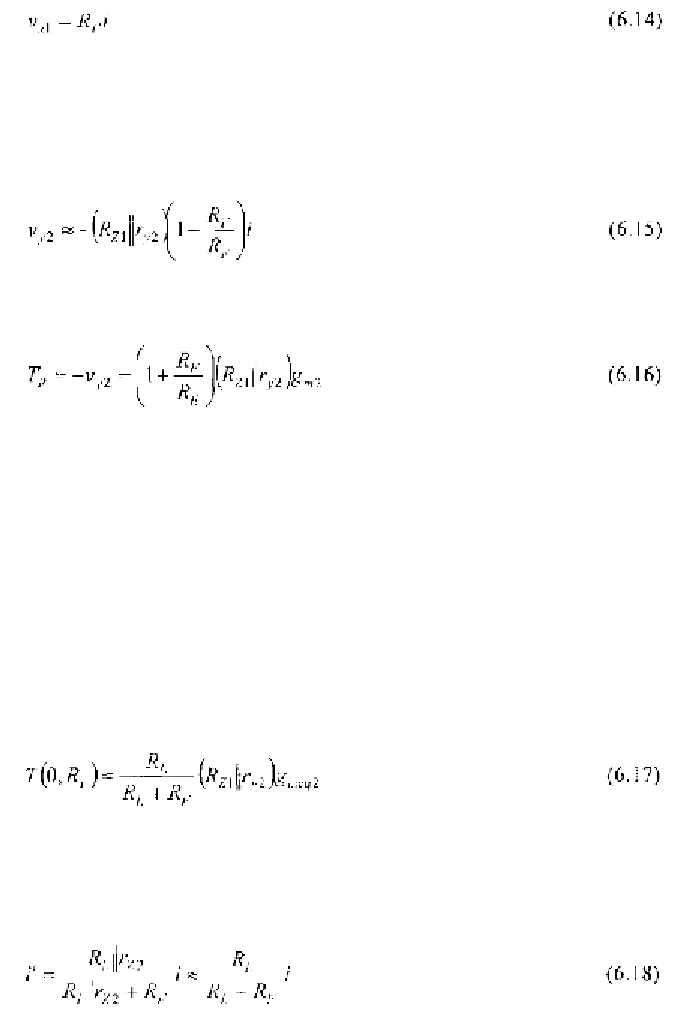Environmental Engineering Reference
In-Depth Information
By inspection of Fig. 6.7b we see that the current which sets voltage
is
equal to the sum of the currents which flow through resistances
and
minus the current supplied by the input voltage source
Neglecting this
last component, voltage
is approximated by
which means that the null return ratio is
Of course, a more accurate result can be achieved by using relationships
reported in Section 2.5, but at the expense of simplicity and clearness.
Moreover, (6.17) could be achieved through relationship (3.19), which
relates the null return ratio with the parameters implicit in the Rosenstark
method.
To evaluate the closed-loop input and output resistances we have firstly
to calculate and which are the return
ratios under the specific conditions for the source resistance, and load
resistance, The approximate expression of the return ratio derived in
(6.7) does not include resistance since we neglected the input loss.
Therefore, (6.7) is representative of the condition
On the other hand, when is equal to infinite, in the equivalent model in
Fig. 6.5 we must nullify the current flowing through
Thus, to evaluate
we can use the circuit in Fig. 6.8 with
and being
















